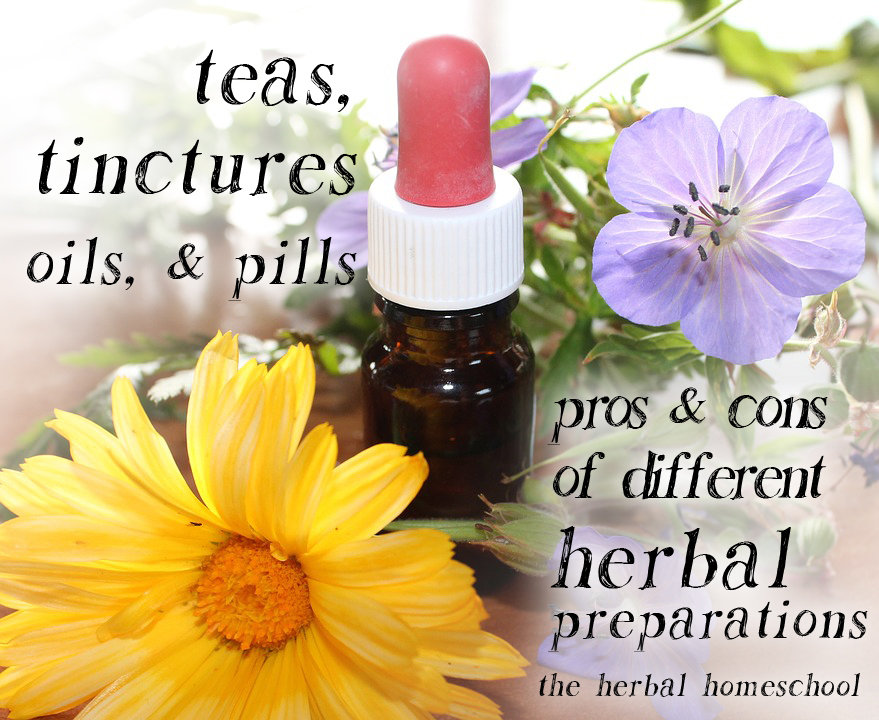Herbal Preparations
 There are so many different ways to prepare herbs, it can be overwhelming to find a place to begin! Do you pop some pills, down a tea, take a dropper-full of a tincture . . . so many options! Your decision how to use your herbs will depend on how strong of a concentration you need (teas are weakest, then infusions, then tinctures are stronger), whether this is for long term maintenance (a tea would be better) or short term symptom relief (tincture every few hours) what part of the plant you are using, and of course, personal preference ( I HATE tea) Here are a few different kinds of preparation along with their pros and cons.
There are so many different ways to prepare herbs, it can be overwhelming to find a place to begin! Do you pop some pills, down a tea, take a dropper-full of a tincture . . . so many options! Your decision how to use your herbs will depend on how strong of a concentration you need (teas are weakest, then infusions, then tinctures are stronger), whether this is for long term maintenance (a tea would be better) or short term symptom relief (tincture every few hours) what part of the plant you are using, and of course, personal preference ( I HATE tea) Here are a few different kinds of preparation along with their pros and cons.
Capsules are simply herbs incased in a gelatin shell. According to the Prescription for Herbal Healing, they are useful when taking such herbs as can be damaged by digestive juices or rendered ineffective if diluted by food and water in your stomach. I find them beneficial because there is no taste, you can easily measure the amount of herb you are taking, and require no preparation.
Tinctures are a combination herbs and alcohol or glycerin. They can be made with one part herbs to five parts alcohol (vodka or rum) soaked in alcohol for two weeks. This dissolves the active parts of the herb. The liquid is then strained, shaken well and stored in a dark place. Tinctures are stronger than teas and infusions because the active compounds have already been released. Other benefits include a long shelf life, ease of absorption by the body, and convenience.
Teas/Infusions are made by soaking the herb (ground, powdered, or crushed) in hot water for a set amount of time based on which herb you are working with. Most of my reading indicates that 10 minutes is sufficient for most loose leaf herbs and up to 30 minutes may be required for bark or roots. I frequently leave mine to steep for much longer because I forget about them and they seem to be fine. Teas are among the gentlest and safest ways to consume herbs, but they give results slowly. The Prescription for Herbal Healing describes the process of healing with teas as, “Drink the tea, wait and see!”
Decoctions are made by actually boiling the herb in water for an extended period of time to release the healing substances then steeping for a number of hours (as compared to infusions where the herb just sits in hot water for a short period of time). They can be more concentrated than infusions and can extract more healing substances from hard herbs such as barks and roots.
Essential Oils are “a natural oil typically obtained by distillation and having the characteristic fragrance of the plant or other source from which it is extracted.” according to the dictionary. I am amazed at how complex essential oils are; lavender has over 400 different molecules and Clary Sage has an amazing 900. They are also incredibly concentrated; it takes 5000 pounds of rose petals to make 1 pound of essential oils. They can be used topically either straight or diluted, or can be inhaled as part of an aromatherapy treatment. I am personally just scratching the surface of safely using essential oils and will be writing more as I learn.
